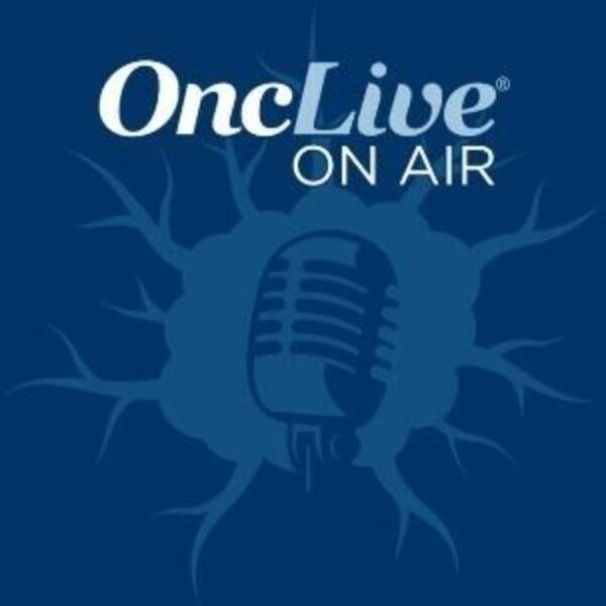Article
CAR Macrophage CT-0508 Shows Early Feasibility in HER2-Overexpressing Solid Tumors
Author(s):
Kim A. Reiss Binder, MD, discusses the rationale behind the first-in-human study of adenovirally transduced anti-HER2 CAR-Ms and where the research will be heading in the future.
Kim A. Reiss Binder, MD

CT-0508, a HER2-directed chimeric antigen receptor macrophage (CAR-M), has induced encouraging early results for patients with HER2-overexpressing solid tumors, according to Kim A. Reiss Binder, MD. In September 2021, the FDA granted a fast track designation to CT-0508.
Reiss Binder stressed the lack of clinical implications provided by early research in the use of CAR-M. However, she pointed to promising initial safety and efficacy results from the first-in-human, multicenter, phase 1 study of adenovirally transduced anti-HER2 CAR macrophages (NCT04660929) to suggest that CAR-M may someday have a role in treating these patients.1
“This was just a new approach to try to generate a targeted therapy using the power of macrophages directly as an anti-tumor cell, but also as a way to change the tumor microenvironment,” Reiss Binder, MD, explained. “The idea was to harness the power of macrophages and see if this could be used as a different novel approach as a new immunotherapy for solid tumors.”
CT-0508 has demonstrated improved overall survival in a preclinical model of HER2-positive cancer.2 This phase I trial evaluating the agent in patients with recurrent or metastatic HER2-overexpressing solid tumors whose cancers do not have approved HER2-directed agents available to them or who do not respond to treatment remains ongoing.
In an interview with OncLive®, Reiss Binder, assistant program director of the hematology/oncology fellowship program and assistant professor of medicine at the Hospital of the University of Pennsylvania, discussed the rationale behind the first-in-human study of adenovirally transduced anti-HER2 CAR-Ms and where the research will be heading in the future.
OncLive®: Could you explain the rationale for examining the effects of CAR macrophages on HER2 overexpressing solid tumors?
Reiss Binder: CAR T-cell therapies have been developed over several years, and at least for liquid tumors, they really changed the landscape of therapies. For solid tumors, it’s not that they won’t, but they haven't yet gotten there. This is just a different novel approach. The idea here was that macrophages are very present in the tumor microenvironment and have several different functions. T cells have different functions than macrophages. Not only are they cytotoxic, but they’re also antigen presenting cells.
What was the design of the phase 1 study examining CT-0508?
This is completely a feasibility and safety study. This has never been done. These CAR macrophages have never been generated before. The number 1 priority was to make sure that it was something we could do. And then the second was to make sure that it was safe for patients to get this therapy.
The design was a single-arm, phase 1 feasibility and safety study. The goal is to enroll 18 patients overall. The study population is people with advanced solid tumors who have had other standard therapies already and have had tumor progression through those therapies, [and] who have HER2-amplified tumors. We think of HER2-amplified tumors in breast cancer, we think of gastroesophageal cancer, but there are other tumors that are sometimes HER2 amplified. It’s almost across the board, we see [patients] with uterine cancer, ovarian cancer, cholangiocarcinoma, pancreatic cancer, colon cancer. [These] can all have HER2 amplification.
The study population is patients with any solid tumor, if they have that HER2 amplification as a tumor feature and they are progressing, meaning their tumors are growing at the time that they enter the study.
Since this is a novel agent, how will it be delivered?
We've treated 3 patients at this point. The delivery method is also novel—this is part of the feasibility—Can we do this? What happens is that patients first undergo Neupogen [filgrastim] to mobilize cells into the peripheral blood system. Then they undergo an apheresis, after which those apheresis cells are sent over to the company that is generating the CAR macrophage. The monocytes they’ve collected are then matured ex vivo.
[The company then] matures [those monocytes] into the terminal-differentiated macrophage cells at the site, [which are then] transduced with an adenoviral vector with the HER2-targeted CAR. The cells are then processed appropriately and frozen. They are cryopreserved and shipped back to wherever the patient is across the country. [The cells] are then thawed at bedside and then infused. It's a little bit of a lengthy process. The apheresis is not that long, but it takes a few weeks for the product to be developed.
For this trial, we allow patients to get a bridging therapy if it's not a HER2-directed therapy. For the first 3 patients we treated, the patients were admitted to the hospital and monitored for safety. We watched them for several days to make sure they didn't have severe [adverse] effects, and then they went home. None of the patients had a severe [adverse] effect, so moving forward, we'll be doing this in the outpatient setting.
Expanding on the results, what are the early findings in terms of toxicity?
[In the first 2 patients], we have not seen a lot in terms of toxicity. The big concern, or the thing you want to make sure you look for, is whether [patients] get cytokine release syndrome [CRS] from this product. The anticipation based on the preclinical work and the differences between macrophages and T cells was that we probably wouldn’t see severe CRS in these patients.
In the first 2 patients, 1 patient had no CRS. [On the third day], the second patient had grade 2 CRS, manifested by fever and a little bit of low blood pressure. [We] managed conservatively, and [the patient] did not require any antibody therapy or any higher level of care. It resolved quickly, within a couple of hours, and then the patient had no further symptoms.
The third patient, who was not in the SITC presentation but who was treated, had no CRS either. We have not seen many concerning toxicity signals at this time. Although, we need to have a few more patients on board before we can comfortably say that this is safe.
What should be taken away from this research? What are the next steps with this modality?
I want to emphasize that this study is not designed to test clinical efficacy. You always hope for clinical efficacy, but with 2 patients and a study that’s not designed to look at efficacy, I don’t know that we can say much about that. What we can say is that when we did peripheral blood draws and then, more importantly, tumor biopsies of these patients; which occur at baseline, then at the eighth day, then at week 4; we have seen changes in the tumor microenvironment [in both the first 2 patients].
We do see preliminary, early evidence that these macrophages are doing something, that the therapy is somehow changing the environment around them. We see T-cell recruitment, we see shifting toward M1 macrophages and away from tumor-resident M2 macrophages. That does not necessarily correlate or mean that there's going to be clinical activity. But it does mean that something is happening at the site where we're hoping something would be happening.
That is really the focus from a translational standpoint in terms of the next steps, trying to validate that, build on that, and figure out what that means.
The other thing that will be happening, from a next-steps standpoint, is that we're going to figure out the kinetics of the CAR macrophages themselves. It won't be part of the first 9 patients, but in the second set of 9, before they get reinfused with their CAR macrophage product, a small portion of those CAR macrophages will be labeled with Zirconium-89. That will then be reinfused with the product. Then we can do a specific PET scan to track over time where these macrophages are going, so we can see if they're going to the tumor or if they're going elsewhere.
From a clinical future standpoint, there's a lot of preclinical work being done alongside this trial. There's interest in combining this down the road with PD-1. There's interest in the future for using this modality in other ways. [Hopefully], in the next year or a couple of years, we will start to see some of those roll out.
Reference
- Reiss Binder KA, Bauml J, Gill S, et al. A phase 1 first in human study of adenovirally transduced anti-HER2 CAR macrophages in subjects with HER2 overexpressing solid tumors: preliminary safety, pharmacokinetics, and TME reprogramming data. Presented at SITC Annual Meeting; November 10-14, 2021; Washington, DC. Abstract 951.
- Klichinsky M, Ruella M, Shestova O, et al. Human chimeric antigen receptor macrophages for cancer immunotherapy. Nat Biotechnol. 2020;38(8):947-953. doi:10.1038/s41597-020-0462-y








